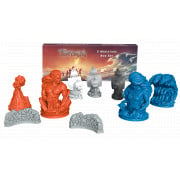Maldito Games

Maldito Games is a Spanish publisher founded in 2015 in Seville, Spain. Its core values: quality, playability and, of course, fun.
- Grid display
- List display
-
Sale !Red price2ème démarque -60%
7,98 €19,95 €
Tindaya - Set of miniatures is a set of 9 miniatures for Tindaya.
- from 13 years
- 1 to 4 player(s)
- 1 to 2h
7,98 €19,95 €
Vendu par Philibert
Copyright © 2026 www.philibertnet.com Legals - Privacy Policy - Cookie Preferences - Sitemap




